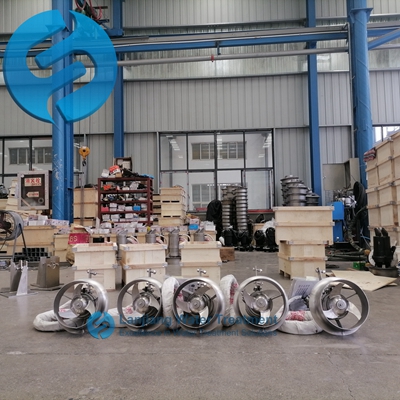The operating procedures of underwater agitators in sewage treatment plants are very important to ensure the normal operation and extend the service life of the equipment. The following are the operating procedures organized according to the relevant reference articles:

First, prepare before operation
1. Read the instructions: Read the instructions carefully before operating the device, familiarize yourself with the structure and performance of the device, and perform the operation under the guidance of familiar operators.
2. Check the equipment status: check whether the overall structure of the mixer is firm and whether the connecting bolts are loose. At the same time, check the electrical wiring of the device to ensure that it is properly grounded and connected according to the electrical diagram.
3. Prepare tools and equipment: Prepare the necessary operating tools and equipment, such as diving suits, diving goggles, diving gloves, etc., for underwater operation and inspection.
Second, boot operation
1. Check the water level: Ensure that the water level in the pool is higher than the top of the impeller of the mixer, which is a prerequisite for starting the machine.
2. Start the equipment: Turn on the power, press the start button, and the mixer will start to run. During the startup process, pay attention to the startup of the device. If there is an exception, stop the device for check in time.
Third, precautions during operation
1. Observe the operating status: During normal operation, pay attention to whether the sound and vibration of the equipment are normal. If there is abnormal sound or vibration, it should be stopped in time for inspection, and the fault can be removed before continuing to run.
2. Maintain a safe distance: A safe distance should be maintained around the mixer to prevent accidents caused by the impact of the high-speed rotating mixing blades.
3. Prevent foreign bodies from entering: During the operation, attention should be paid to prevent foreign bodies from entering the equipment, so as not to affect the normal operation and service life of the equipment.
Fourth, stop operation
1. Remove the load: Before stopping, the load should be removed first to avoid damage to the equipment caused by stopping with load.
2. Cut off the power: press the stop button, and then cut off the power to ensure that the device stops running completely.
Fifth, maintenance and maintenance
1. Regular cleaning: regularly clean the transmission part and attachments of the mixer to keep the equipment clean and lubricated. At the same time, remove the silt, scum, debris attached to the blade to ensure that the stirrer can operate normally.
2. Check bearings and lubrication: for mechanical mixers, regularly check the lubrication of each bearing, such as insufficient lubricating oil or poor quality, need to be replenishment or replacement in time.
3. Replace the lubricating oil: the submersible mixer needs to replace the lubricating oil regularly, and the cycle is generally half a year. During the maintenance and disassembly of the machine, attention should be paid to the tightness of the equipment to prevent the leakage of lubricating oil.
4. Check the electrical part: regularly check whether the electrical part is running normally. If there is damage or aging, it should be replaced in time.
5. Long-term unused treatment: Before the equipment is turned on again after a long time of no work, the insulation of the motor should be checked to prevent damage to the motor and impeller due to the difficulty of starting caused by sediment deposition for a long time.
Sixth, other precautions
1. Safe operation: During the entire operation process, safe operation procedures should always be followed to ensure the safety of personnel and equipment.
2. Regular inspection: Regular comprehensive inspection of the equipment, including structure, performance, electrical parts, etc., to timely discover and deal with potential problems.
3. Professional training: The operator should receive professional training, master the operation method and maintenance knowledge of the equipment, and improve the operation skills and equipment management level.
In short, the operating procedures of the underwater stirrer in the sewage treatment plant involve many aspects such as preparation before operation, boot operation, precautions during operation, shutdown operation, maintenance and maintenance, and other precautions. Only the operation and maintenance in strict accordance with the regulations can ensure the normal operation of the equipment and extend the service life.
Post time:2024-07-06